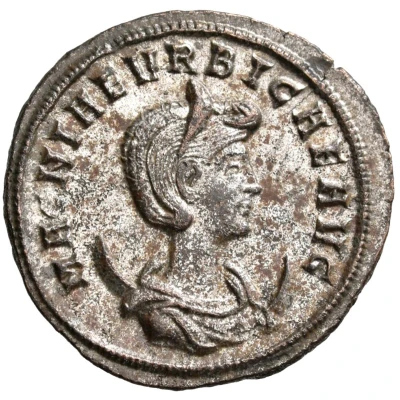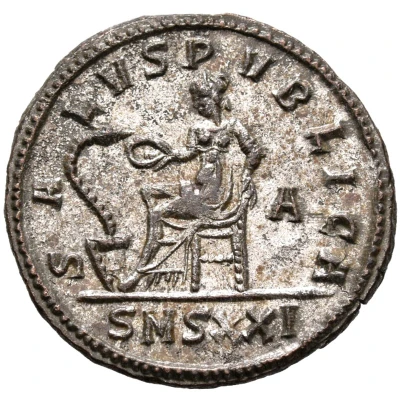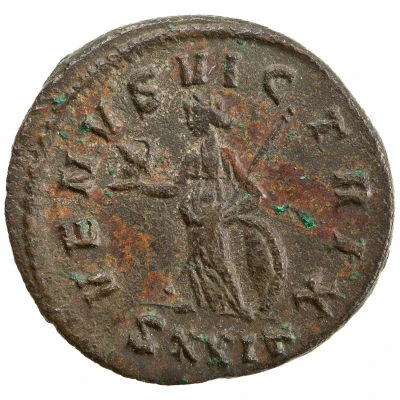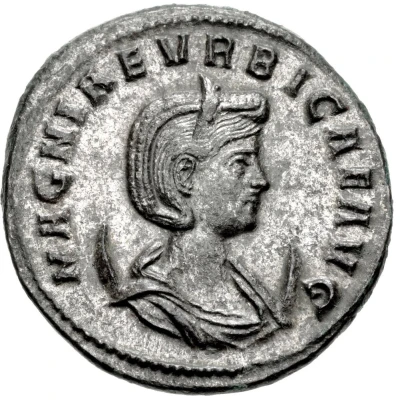


© Paul-Francis Jacquier
Antoninianus - Magnia Urbica SALVS PVBLICA; Salus
| Silver | 3.5 g | 20 mm |
| Issuer | Rome › Roman Empire (27 BC - 395 AD) |
|---|---|
| Empress | Magnia Urbica (282-284) |
| Emperor | Carinus (Marcus Aurelius Carinus) (283-285) Numerian (Marcus Aurelius Numerius Numerianus) (283-284) |
| Type | Standard circulation coin |
| Years | 283-285 |
| Value | Antoninianus (1) |
| Currency | Antoninianus, Reform of Caracalla (AD 215 – 301) |
| Composition | Silver |
| Weight | 3.5 g |
| Diameter | 20 mm |
| Shape | Round (irregular) |
| Technique | Hammered |
| Demonetized | Yes |
| Updated | 2024-10-05 |
| Numista | N#298416 |
|---|---|
| Rarity index | 100% |
Reverse
Salus, draped, seated left feeding snake rising from altar.
Script: Latin
Lettering:
SALVS PVBLICA
-/A//SMSXXI
Translation:
Salus Publica.
Public health.
Comment
Source:Online Coins of the Roman Empire (OCRE)
Interesting fact
The Antoninianus coin was introduced during the reign of Emperor Carus (282-283 AD) as a replacement for the denarius, which had been the standard Roman silver coin for centuries. The Antoninianus was made of silver, but it was smaller and lighter than the denarius, weighing only 3.5 grams compared to the denarius' 3.9 grams. Despite its smaller size, the Antoninianus was valued at double the denarius, reflecting the inflationary pressures of the time. The coin's design featured the image of the emperor on one side and the goddess Salus (or Safety) on the other, symbolizing the emperor's role as protector of the Roman people.



